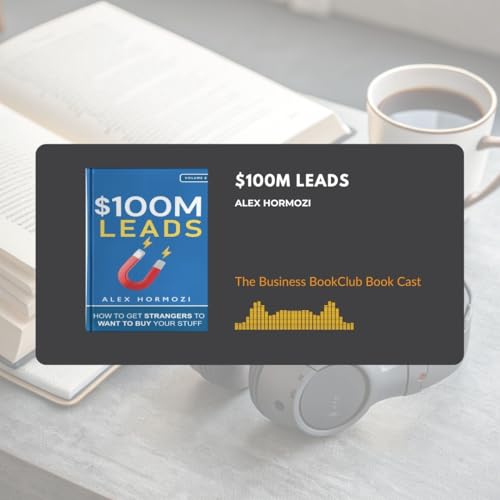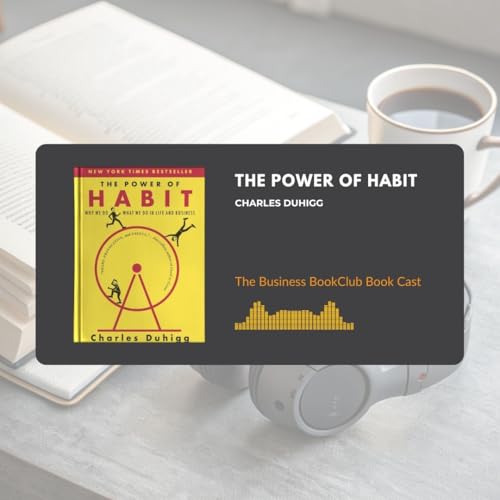Episode Summary In this episode of The Business Book Club, we explore Dan Martell’s transformational guide for every overwhelmed entrepreneur: Buy Back Your Time: Get Unstuck, Reclaim Your Freedom, and Build Your Empire.
Martell doesn’t just teach productivity — he delivers a full-blown life and business operating system. If you’ve ever felt stuck in the very business you built, caught in the “Get S*** Done” (GSD) trap of nonstop hustle, this episode is your blueprint for breaking free.
We unpack the Buyback Principle, a practical strategy for reclaiming time, scaling smarter, and avoiding the hidden trap most founders fall into: growing their company into a job they secretly resent.
Key Concepts Covered ⏳ The Buyback Principle -
Step 1: Use your resources (money, tech, people) to buy back time
-
Step 2: Reinvest that freed time into activities that generate more revenue and energize you
-
Repeat this loop consistently for exponential freedom and growth
⚠️ The Pain Line -
The moment when more business growth = more personal pain
-
Many founders subconsciously sabotage success just to feel in control again
-
Martell's solution: buy back your time before you hit the wall
💵 Your Buyback Rate -
A clear formula:
Total annual comp ÷ 2,000 hours = your hourly value
-
If your time is worth $100/hr, doing $10 tasks is a $90/hr loss
-
Buying back time starts with knowing what your time is actually worth
🧭 The DRIP Matrix A 2x2 tool for auditing your time across two axes:
✅ Delegate (Low $ / Low Energy) → Quick wins: email, scheduling, admin
🔁 Replace (High $ / Low Energy) → Automate or systematize these with tech or SOPs
🌱 Invest (Low $ / High Energy) → Keep these: hobbies, networking, learning
🎯 Produce (High $ / High Energy) → Your Zone of Genius. Guard it with everything.
🧠 The 5 Time Assassins (Internal Saboteurs) -
The Staller: Avoids growth decisions to stay "safe"
-
The Speed Demon: Rushes decisions without reflection
-
The Supervisor: Micromanages everything (“If I want it done right…”)
-
The Saver: Obsessed with saving money at the expense of time
-
The Self-Medicator: Escapes stress with destructive habits
💡 These mental traps masquerade as logic — but they bleed your best hours.
🛠 The First Hire: Admin Assistant -
Your calendar and inbox are not CEO tasks
-
Delegate them first → recover 10–15 hours/week instantly
-
If you’re doing admin, you're already doing their job — poorly
🎥 The Camcorder Method (Training Hack) -
Record yourself doing the task
-
Let your new hire document the process
-
Saves hours, confirms comprehension, and builds systems with minimal founder effort
Actionable Takeaways ✅ Audit Your Time in 15-Minute Blocks → Track for 2 weeks, then use the DRIP matrix to spot low-value tasks
✅ Calculate Your Buyback Rate → Know your hourly value. Every $10 task is costing you real money
✅ Identify Your Time Assassins → Are you stalling, micromanaging, hoarding money, or escaping stress? Awareness = freedom
✅ Hire to Buy Time, Not Just to Grow → Assistants and systems free you up to focus on what only you can do
✅ Reinvest in Production + Investment Quadrants → Use your reclaimed time on high-value, high-energy work that compounds
Top Quotes 📌 “80% done by someone else is 100% freaking awesome.” 📌 “Buy back your time before your business buys your life.” 📌 “Don’t hire to grow the business. Hire to buy back your time.” 📌 “If you’re the bottleneck, your business can’t breathe.”
Resources Mentioned 📘 Buy Back Your Time by Dan Martell
Final Thought What would you do with 10 hours back next week? Not theoretically — really. Would you build something bold? Rest? Create new revenue?
The Buyback Principle only works if you commit to reinvesting your time into what truly matters.
This isn’t just time management. It’s life design for founders. Start the audit. Break the loop. Buy back your freedom.
#BuyBackYourTime #DanMartell #FounderFreedom #EntrepreneurMindset #TimeAudit #ProductivityTools #ScaleSmarter #BusinessBookClub #DRIPMatrix #TimeWellSpent
 16 分
16 分 14 分
14 分 12 分
12 分 17 分
17 分 14 分
14 分 15 分
15 分 16 分
16 分 12 分
12 分

